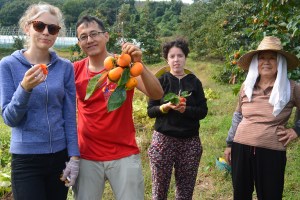By A.T.
“Before, no matter how hard they worked or how little they earned, farmers had always had at least the assurance that they were doing the necessary work of the world, and that before them others (most likely their own parents and grandparents) had done the same work, which still others (most likely their own children and grandchildren) would do when they were gone. In this enduring lineage had been a kind of dignity, the dignity of at least knowing that the work you are doing must be done and that it does not begin and end with yourself….The dignity of continuity had been taken away. Both past and future were disappearing from them…what they knew was passing from the world.”
- Wendell Berry Jayber Crow
American farmer, poet and novelist, Wendell Berry, wrote these lines to describe the plight of farmers in early 1960s rural Kentucky. In the post-war United States, economic growth and industrialization were rapidly leading to the decline of agricultural society. This model of development that devalues farmers would soon be exported and take root across the Pacific Ocean, in the much smaller land of South Korea. The results have been no less destructive.
After the Korean War, the country faced unprecedented levels of poverty. In 1970, the dawn of the second decade of his rule, president Park Chung-hee launched the Saemaeul (New Village) Movement and the Green Revolution to firmly kickstart Korea’s economic leap forward. The focus shifted sharply to exports of high-tech goods and imports of basic foodstuffs, effectively leaving Korean farmers – then still comprising half the population – in the dust.
Flash forward to 2014, Korean farmers – who now make up only 6% of the population – are facing one of the worst crises in their history. Over the summer, the government announced that this would be the last year of rice import quotas and 2015 would see the full opening of the Korean rice market. Competition with foreign rice growers is believed to lead to the collapse of Korean rice farming. [1]
Despite the dire situation that they face, politicized Korean farmers keep going because they “believe in the righteousness of their struggle.”[2] The Korean Peasants’ League and the Korean Women’s Peasant Association are prepared to keep Korean farming alive by any means at their disposable. In October 2014, the ISC team worked alongside leaders of these two groups and heard their stories firsthand.
For me, it was a lucky time to participate in the ISC’s two farming-theme weekends. After a four-day school trip of following the footsteps of the 1894 Donghak Peasants’ Revolution in Jeollabukdo (link to the ISC’s coverage of this historical event), I felt well-equipped to connect history with the present-day struggles. Our first stop was Sangju, Gyeongsangbukdo. The Seunggok Farming Experience Village is a “Back to the Land” center, a place where city people can get back to agricultural roots. Here, we were put to useful work, picking the famous Sangju (pears), threshing 들게 (perilla) and clearing an entire red-tinged field of 메밀 (buckwheat).
The work itself was meaningful, but more so were the informal discussions we had with the farmers over drinks and out in the fields. Particularly telling was the relationship between our host Jo Won Hee, Sangju’s Korean Peasant League secretary, and his mother, a life-long farmer. While overtaking us in the perilla field on a peaceful Sunday morning, this strong, friendly, outgoing elderly lady warned us “not to go into farming.” After a Saturday night of lively beer-fuelled discussion about the vital importance of food sovereignty, it was a huge reality check – farming is hard work and most farmers would rather spare their kids of it. Go to the city, get educated, get a city job. That seems to be the mantra.
Jo Won Hee and his female counterpart of Sangju’s Korean Women’s Peasant Association were university student activists during the 1980s democratization movement. Against their families’ expectations, their paths brought them right back to the farms where they came from. Seeing the preservation of farmers’ dignity as a vital struggle in Korea, they made the choice to pour their activist spirit into building a strong, independent agricultural community. With the recent protests in Seoul against the opening of the rice market, Jo remembers the days of “holding a molotov cocktail in one hand and a pipe in the other” while confronting the police. He says he is too old for that now, but he dedicates his time to advocating for the rights of farmers to keep their independence from big companies and foreign governments.
In Korea today, as in many places around the world, raising up farmers is inextricably linked with raising up women. In fact, women’s cross-generational efforts seem to hold the key to keep farming a living force. Although women have always contributed the lion’s share of farm work and have taken responsibility for seed selection and preservation, patriarchal society has denied them property and social rights. In response to this state of agriculture, The Korean Women’s Peasant Association was founded in 1989. In 2012, they won international recognition as winners of La Via Campesina’s biodiversity award for their work to preserve Korean indigenous seeds. Feminist and women’s studies PhD student Kim Hyo Jong studies the intricate ways in which “KWPA activists are working together with hal-mo-ni (grandmothers) to develop the indigenous seed preservation movement as the food sovereignty movement.”[3]
Young women farmers learning about seeds from their elders is just one way in which women are taking matters into their own hands. The KWPA’s version of a CSA (Community Supported Agriculture), 언니네텃밭 My Sister’s Garden Plot, has achieved success in empowering women to grow and sell their food directly to consumers. With fifteen plots now active in communities around Korea, this movement has the potential to sustain small farmers.
The aging population of farmers around the world and the unwillingness of many young people to go into the fields poses a severe challenge, but Korea’s peasant movement is devising innovative ways to move forward. The dignity of continuity is not yet a lost cause.
[1] http://english.hani.co.kr/arti/english_edition/e_international/655935.html
[2] Interview, Sangju Sister’s Garden Plot, Korean Women Peasants’ Association
[3] http://www.yale.edu/agrarianstudies/foodsovereignty/pprs/71_HyoJeong_2013.pdf
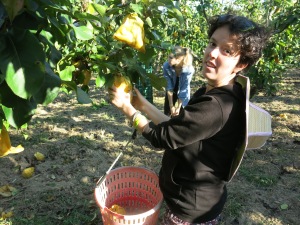
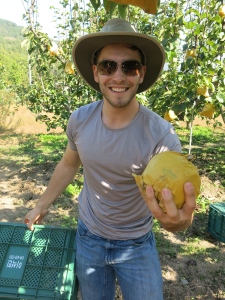
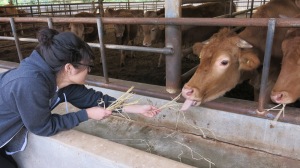
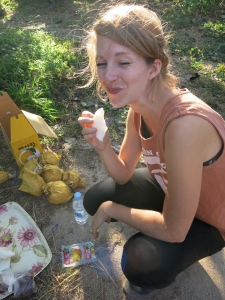 Having just arrived in Korea a little over a month ago, I’ve been immensely curious about life outside of Seoul, in particular rural and agrarian life. Both Koreans and foreigners had told me there isn’t much to see in the Korean countryside. They dismissed its importance, remarking how there is very little un-urbanized land and what remains isn’t picturesque or well groomed. However, after a short but transformative weekend in Sangju, it became clear that the rural landscape and the communities that reside there are an indispensible part of South Korea’s past, present and future.
Having just arrived in Korea a little over a month ago, I’ve been immensely curious about life outside of Seoul, in particular rural and agrarian life. Both Koreans and foreigners had told me there isn’t much to see in the Korean countryside. They dismissed its importance, remarking how there is very little un-urbanized land and what remains isn’t picturesque or well groomed. However, after a short but transformative weekend in Sangju, it became clear that the rural landscape and the communities that reside there are an indispensible part of South Korea’s past, present and future.